Advertisements
Advertisements
Question
In the figure, given below, ABCD is a square, and ∆ BEC is an equilateral triangle. Find, the case:∠BAE
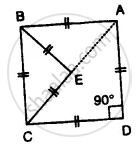
Solution
We know that the sides of a square are equal and each angle is of 90°
Three sides of an equilateral triangle are equal and each angle is of 60.
In fig.,
∴ ABCD is a square and Δ BEC is an equilateral triangle,
(i) ∠ABE = ∠ABC − ∠CBE
= 90° − 60° = 30°
(ii) In Δ ABE,
∠ABE + ∠AEB + ∠BAE = 180° ...............(Angles of a triangle)
⇒ 30° + ∠BAE + ∠BAE = 180° .............(∵ AB = BE)
⇒ 30° + 2∠BAE = 180°
⇒ 2 ∠BAE = 180°− 30° = 150°
⇒ ∠BAE =`(150°)/2=75°`
APPEARS IN
RELATED QUESTIONS
Find the unknown angles in the given figure:
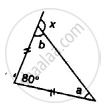
Apply the properties of isosceles and equilateral triangles to find the unknown angles in the given figure:
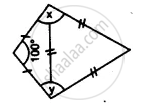
The base angle of an isosceles triangle is 15° more than its vertical angle. Find its each angle.
The ratio between a base angle and the vertical angle of an isosceles triangle is 1: 4. Find each angle of the triangle.
In the given figure, BI is the bisector of ∠ABC and Cl is the bisector of ∠ACB. Find ∠BIC.
In ∆ ABC, BA and BC are produced. Find the angles a and h. if AB = BC.
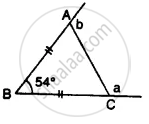
In Figure, BP bisects ∠ABC and AB = AC. Find x.
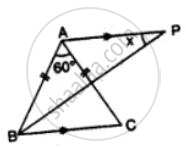
Find x in Figure Given: DA = DB = DC, BD bisects ∠ABC and∠ADB = 70°.
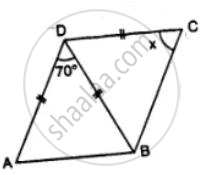
In the figure, AB is parallel to CD, find x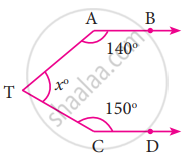
The angles of a triangle are in the ratio 1 : 2 : 3, find the measure of each angle of the triangle
